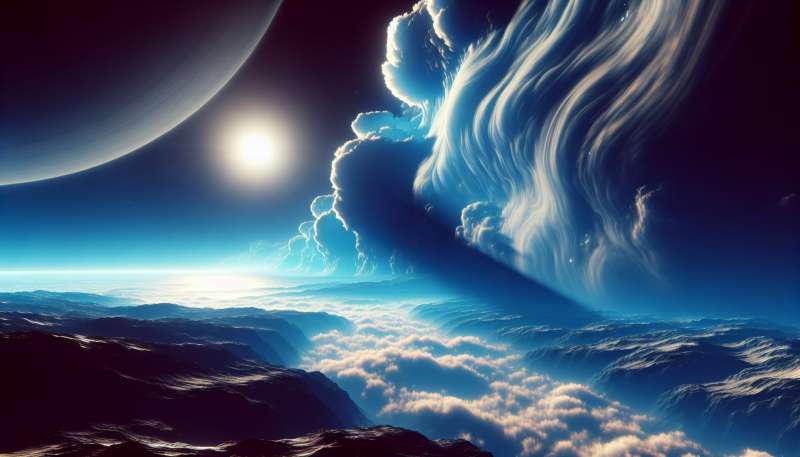
Venus's Mysterious Sulfuric Veil
Venus is enshrouded in thick, toxic clouds of sulfuric acid, reflecting sunlight and concealing its scorched surface. These clouds create a runaway greenhouse effect, making Venus the hottest planet in our Solar System despite being second from the Sun.
Jupiter's Ammonia Ice Clouds
Jupiter's upper atmosphere boasts bright, white clouds composed of frozen ammonia crystals. They form a tapestry of swirling patterns, including the iconic Great Red Spot, a massive storm larger than Earth that has raged for centuries.
Mars' Seasonal Water-Ice Caps
Mars features thin, wispy clouds of water ice, visible across its sky. These clouds are most prominent during the Martian cold season and can form frost and even snow that gently settles on the rugged landscape.
Saturn's Upper-Level Hazes
Saturn's upper atmosphere holds layers of haze, which are clouds made of icy particles. These hazes scatter sunlight, giving Saturn a yellow-brown hue and occasionally revealing hexagon-shaped cloud patterns at its poles.
Titan's Methane Monsoons
Titan, Saturn’s largest moon, is the only other known body with stable liquid on its surface. Its dense, nitrogen-rich atmosphere hosts methane clouds that precipitate, initiating methane rain and carving rivers and lakes into its icy surface.
Neptune's Methane Ice Clouds
Neptune's deep blue color comes from methane in its atmosphere, which freezes into ice clouds at high altitudes. These clouds cast shadows on the lower cloud deck, contributing to the planet's dynamic and stormy weather patterns.
Exoplanet Clouds Beyond Our System
Some exoplanets have been observed with clouds made of exotic materials like silicates and metals. These clouds can precipitate as iron, corundum or even rubies and sapphires, showcasing the incredible diversity of planetary weather in the universe.Rain of Iron
On exoplanet WASP-76b, temperatures are so high that it rains molten iron from the sky.
Which planet has sulfuric clouds?
Jupiter with ammonia ice
Venus's reflective veil
Mars with water-ice
Company